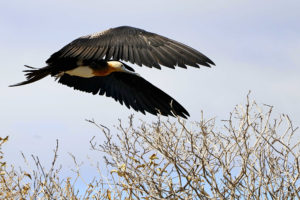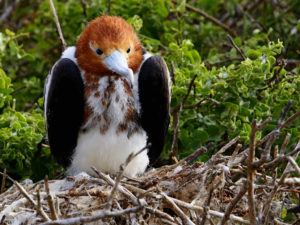Following Darwin’s Footsteps: Wildlife Watching and Birding the Galapagos – with Sue Keefer and Steve Norris
Date/Time
09/18/2018 7:00 pm - 8:30 pm
Location
Mather Auditorium at the Wells Reserve at Laudholm
After a career running children’s summer camps, then living aboard a sailboat, and working for Vermont State Parks, Sue Keefer and Steve Norris have spent seven summers helping out at Rachel Carson National Wildlife Refuge where you may have encountered them trying to keep invasive plants at bay, mowing, painting, or leading bird, butterfly, tide-pool, history, and photography programs. In the winter of 2017-18, Sue and Steve acted on a long-standing bucket list item. Their love of Ecuador compelled them to visit to the Galapagos Islands – the “Showcase of Evolution”.
Their original plan for a “non-bird-centric” trip soon fell apart as they realized that, although the Galapagos have “only” 178 species of birds, the 29 resident and 22 endemic species are a fascinating study. From the breathtaking nesting colony of Waved Albatross to the inquisitive endemic Mockingbirds, bird life in the Galapagos is quite a treat. Close-up observation and study of Darwin Finches is a real-life exercise in the what’s, why’s, and how’s of evolution! The non-flying fauna is equally interesting with large colonies of sea lions, marine and land iguanas and, of course, giant tortoises. It became readily apparent why the Galapagos are a unique and invaluable natural resource worthy of intense protection.
Darwin’s two month stay in the Galapagos in 1835 led to a new biology based on a unifying theory of evolution. Sue and Steve’s say their stay on the islands left them feeling rather inadequate in their own “naturalist” skills! Darwin, like most early naturalists, left the island with many sketches and specimens to study; Sue & Steve brought away many photographs and memories of unique living things they observed. We know you will get caught up in the fun and entertaining style of these enthusiastic laid-back educators as they share their observations of the animals, plants, and environment that make the Galapagos special. Free and open to the public. Come early for social time and refreshments.


